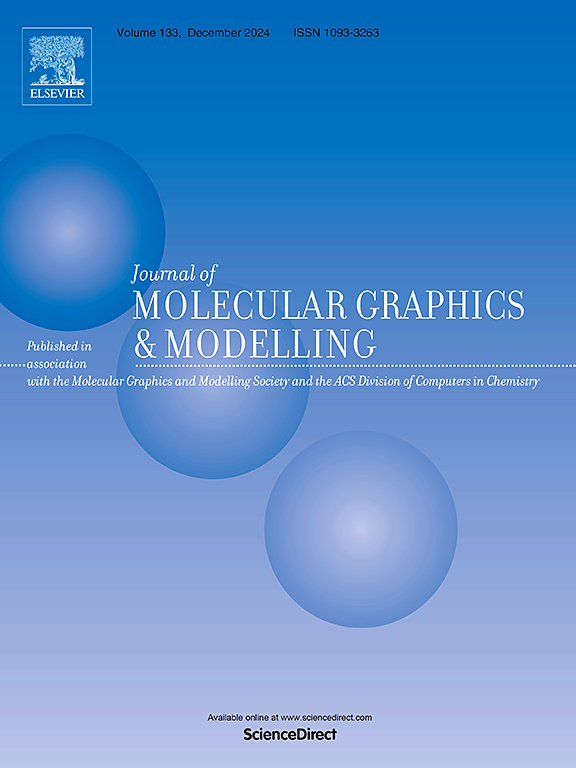Targeting OPA1 protein for therapeutic intervention in autosomal dominant optic atrophy: In silico drug discovery
IF 2.7
4区 生物学
Q2 BIOCHEMICAL RESEARCH METHODS
引用次数: 0
Abstract
Autosomal dominant hereditary optic atrophy (ADOA) is a prevalent hereditary condition characterized by the gradual and simultaneous deterioration of vision. Mutations in Optic atrophy 1 (OPA1) have been linked to ADOA, the prevailing form of inherited optic neuropathy. However, the current therapeutic options are limited. This study aimed to identify a drug-like molecule that can serve as an activator of the OPA1 GTPase domain, using in silico virtual screening and molecular dynamic simulation pipeline. A ligand-based pharmacophore model was generated to identify the important biological entities in natural compounds, followed by virtual screening pipeline. Total 55,96,00 drug-like compounds were screened and then subsequently proceed for molecular docking, molecular dynamics simulation (200ns), MM-PBSA analysis, and ADMET (Swiss ADME server) studies. Virtual screening revealed the top-ranked compound ZINC000009190697 (−8 kcal/mol). Furthermore, the stability of the top hit compound at the active site of OPA1 was demonstrated using molecular dynamics simulations and MM-PBSA calculations. ADMET analysis assisted in the identification of the top hit compound as possible activators of OPA1 with optimal drug-like properties. These results indicated that there is need of further experimental assessment of the top-hit compound ZINC000009190697 in wet lab to confirm its efficacy as a potential OPA1 activator in both in vitro and in vivo studies.

求助全文
约1分钟内获得全文
求助全文
来源期刊

Journal of molecular graphics & modelling
生物-计算机:跨学科应用
CiteScore
5.50
自引率
6.90%
发文量
216
审稿时长
35 days
期刊介绍:
The Journal of Molecular Graphics and Modelling is devoted to the publication of papers on the uses of computers in theoretical investigations of molecular structure, function, interaction, and design. The scope of the journal includes all aspects of molecular modeling and computational chemistry, including, for instance, the study of molecular shape and properties, molecular simulations, protein and polymer engineering, drug design, materials design, structure-activity and structure-property relationships, database mining, and compound library design.
As a primary research journal, JMGM seeks to bring new knowledge to the attention of our readers. As such, submissions to the journal need to not only report results, but must draw conclusions and explore implications of the work presented. Authors are strongly encouraged to bear this in mind when preparing manuscripts. Routine applications of standard modelling approaches, providing only very limited new scientific insight, will not meet our criteria for publication. Reproducibility of reported calculations is an important issue. Wherever possible, we urge authors to enhance their papers with Supplementary Data, for example, in QSAR studies machine-readable versions of molecular datasets or in the development of new force-field parameters versions of the topology and force field parameter files. Routine applications of existing methods that do not lead to genuinely new insight will not be considered.
 求助内容:
求助内容: 应助结果提醒方式:
应助结果提醒方式:


